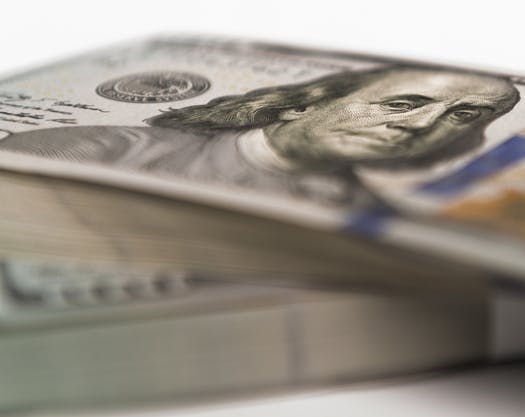
You probably already know that contributing to your 401(k) plan will improve your retirement finances. But shoveling as much money as possible into a 401(k) account shouldn’t always be your top priority. There are some circumstances when it makes sense to pay down debt and build up some savings outside of your 401(k) before boosting your 401(k) withholding. Here’s what you should think about before increasing your 401(k) contributions.
Get an Employer Match.
Taking advantage of employer 401(k) contributions is the fastest way to build a nest egg for retirement. The amount you need to save to get the maximum possible 401(k) match varies by employer, but frequently requires saving approximately 6 percent of pay. “Any time there’s an employer match, I think it makes sense to at least contribute enough to receive the full match,” says Theodore J. van Gerven, a certified financial planner for Modern Wealth Builders in Woburn, Massachusetts.
Pay Down High Interest Debt.
If the interest rate you are paying on your debt is higher than the return you expect to earn on your investment, it makes sense to pay down the debt first. “Obviously, if you have high interest rate debt, such as credit card debt, that should take priority over additional 401(k) contributions, above the amount needed to receive any match,” van Gerven says.
Those who have low interest debt, such as you might pay on a mortgage or student loans, may come out ahead by prioritizing saving for retirement. However, some people prefer to eliminate a specific debt before maxing out a retirement account. “Depending on the interest rate and repayment options, it can make sense to pay down student loan debt before increasing 401(k) contributions,” van Gerven says. “In all honesty, it’s not always about maximizing the financial outcome. A lot of times it’s about creating a plan that a person will stick to because it makes them feel better.”
Create an Emergency Fund.
You need a cash reserve outside of your retirement account to cope with unexpected expenses. You don’t want to have to raid your 401(k) plan, and incur the taxes and fees associated with an early withdrawal, to cope with an emergency expense, such as a car or home repair or medical bill. “Ideally, you want three to six months worth of monthly expenses set aside in emergency savings and $0 in bad debts before putting money towards your 401(k),” says Ryan Stith, a certified financial planner at Pivot Point Wealth Planning in Brandenburg, Kentucky. “Many people who skip the savings and debt part of the equation eventually end up backtracking by stopping contributions to their 401(k), taking out loans against their 401(k), or worse, taking early withdrawals from their 401(k) when emergencies do arise.” 401(k) withdrawals before age 59 1/2 typically trigger a 10 percent early withdrawal penalty, and income tax is also due on the distribution. So, a 35-year-old worker in the 24 percent tax bracket who withdraws $1,000 from his 401(k) plan could trigger $340 in taxes and penalties.
Avoid High-Cost 401(k) Plans.
Some 401(k) plans provide excellent investment options and negotiate for low fees on behalf of employees, while other 401(k) accounts are riddled with poor investment choices and excessive fees. If your 401(k) plan doesn’t have the investments you want or has high fees that are eroding returns, after you get any 401(k) matching funds, you may want to further save for retirement somewhere else. “Think about the quality of the offerings within the 401(k) investment lineup. Actively managed funds sometimes have higher fees than you could get outside the 401(k) plan,” says Tamara Witham, a certified financial planner for GreenLife Advisors in Harrison, New York. “Could you potentially get lower cost passively managed funds, such as ETFs, with an IRA, rather than investing in the 401(k) plan?”
Balance Other Savings Goals.
Many people have more immediate financial goals than saving for retirement, such as accumulating enough money for a home down payment. There are cases when it makes sense to contribute enough to the 401(k) plan to qualify for employer contributions, and then prioritize your more immediate savings goals. “When working with young professionals, we’re often trying to balance short and long-term goals, such as saving for a down payment on a home versus maximizing employer benefits,” van Gerven says. “If you’re planning to buy a home in the next couple of years, but you’re using your cash flow to max your 401(k) contributions, you’ll obviously have less money to save for a down payment.”
Some parents also want to fund a college education for their children, but many financial planners recommend prioritizing retirement savings over paying for college costs for a child. “You can always take out loans for a child’s education, but you can’t take out loans for retirement,” Witham says.
Consider the Tax Savings.
You can defer paying taxes on as much as $19,000 in a 401(k) plan in 2019, or $25,000 if you are age 50 or older. A 40-year-old worker in the 24 percent tax bracket could reduce his tax bill by $4,560 if he maxes out his 401(k) plan in 2019. The tax savings is even greater for workers who pay a higher tax rate. Remember to factor in tax breaks when deciding whether to fund a retirement account or prioritize other more immediate expenses.


